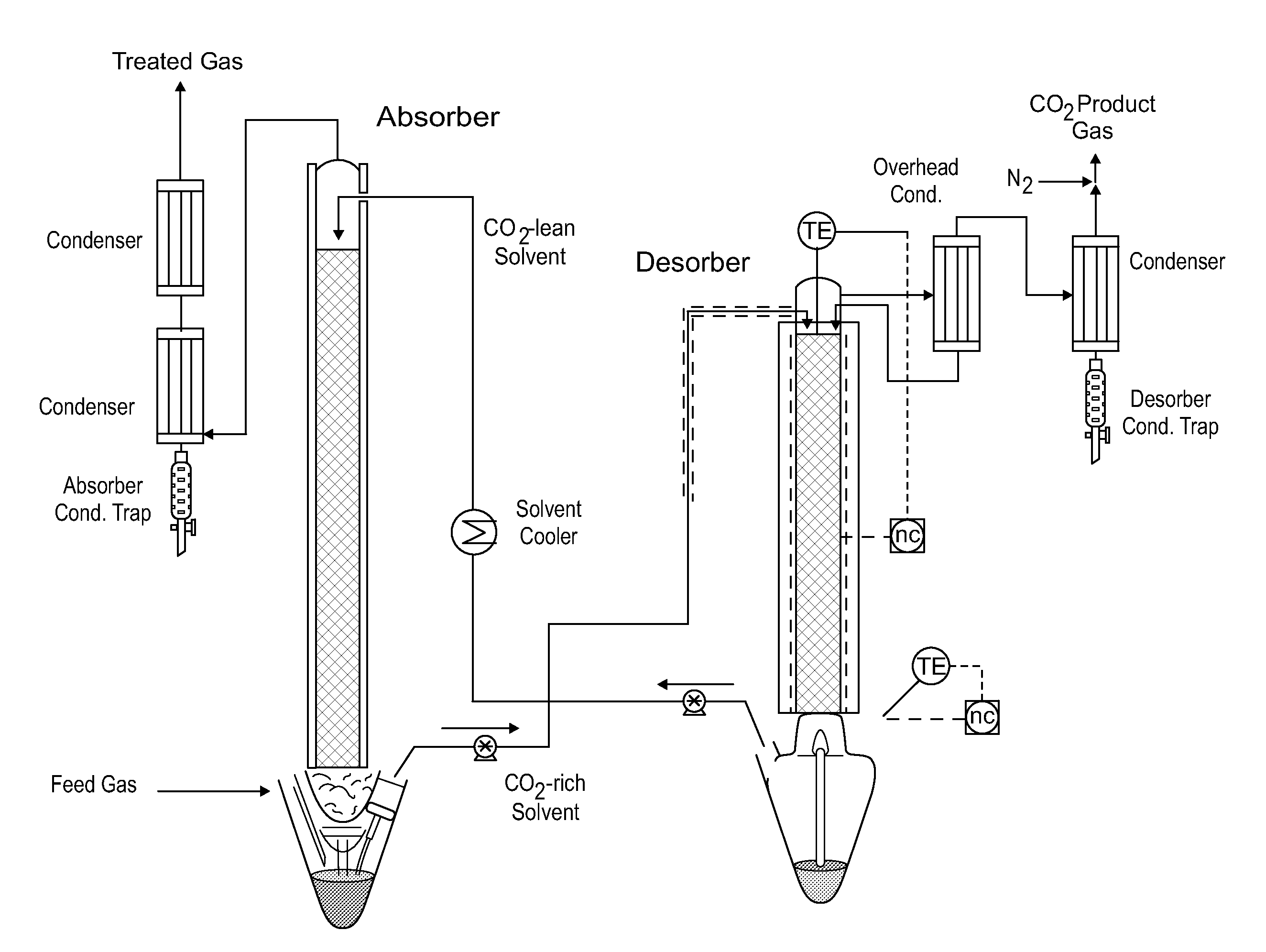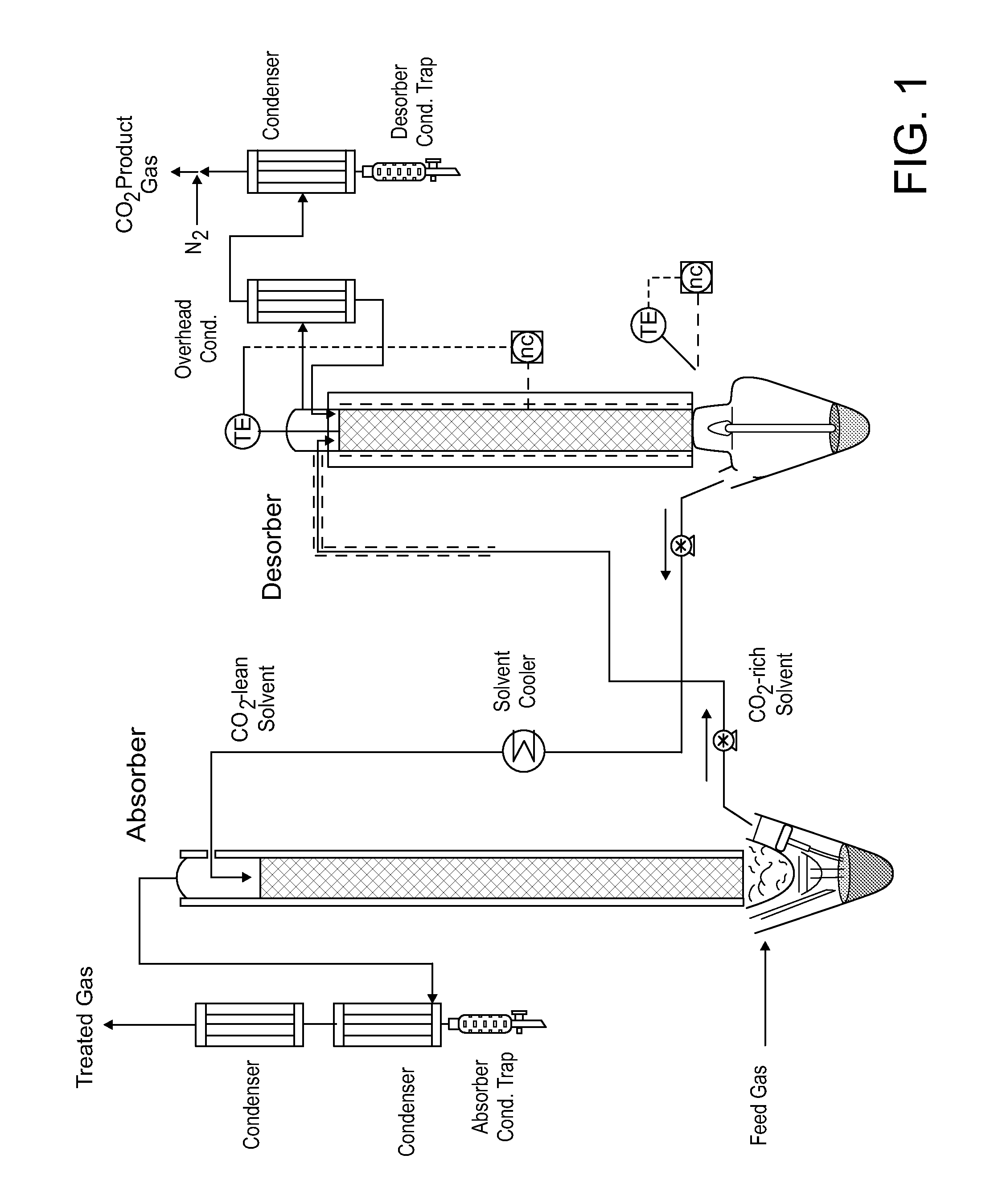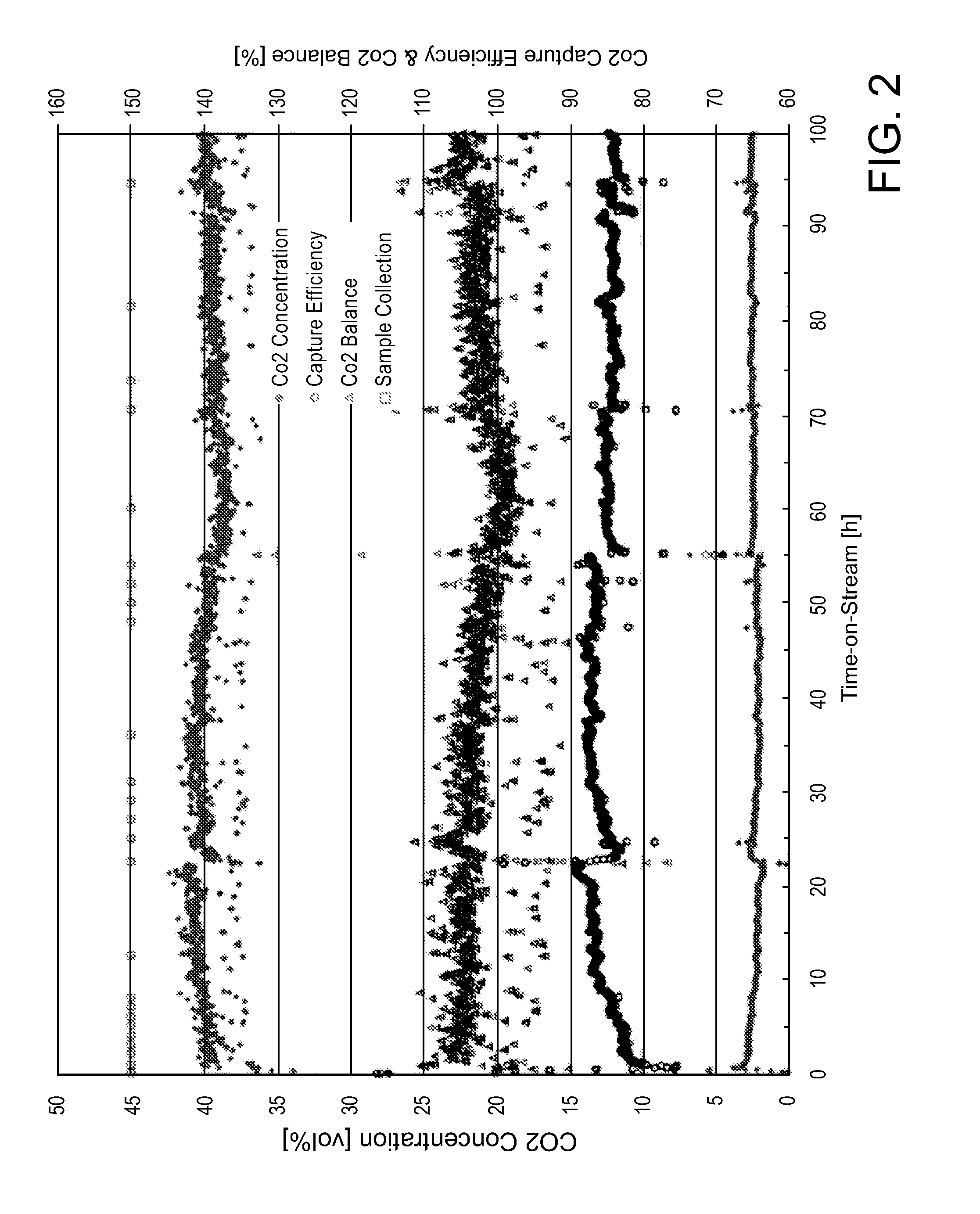Water control in non-aqueous acid gas recovery systems
- Summary
- Abstract
- Description
- Claims
- Application Information
AI Technical Summary
Benefits of technology
Problems solved by technology
Method used
Image
Examples
example 1
5.1. Example 1
Three Phase Equilibrium Measurements to Observe Water Separation in a NAS CO2 Removal System
[0052]A 5 mL sample of an exemplary NAS consisting of equimolar portions of 2-fluorophenethylamine (2FPEA) and octafluoropentanol (OFP) and a 5 mL aliquot of DI water were placed in a stirred glass, round bottom flask equipped with an overhead condenser. Excess water was maintained in the vessel at all times to ensure that equilibrium H2O loading in the NAS was achieved. The pressure of the stirred vessel was maintained at atmospheric pressure. The two phase sample was heated to the desired temperature, i.e., 40, 80, or 90° C., using a electric heater jacket and 100 mL / min of a CO2—N2 blend gas with various compositions was bubbled through the two phase liquid sample. The CO2—N2 feed was stopped once the CO2 concentration in the outlet stream was >99% of the inlet concentration. A 0.9 mL sample from the NAS phase was extracted from the batch vessel using a syringe through a sept...
example 2
5.2. Example 2
Water Balance in a NAS CO2 Removal Process
[0070]An experiment was performed in a lab-scale, continuous flow gas absorption system having a standard absorber-desorber configuration to experimentally demonstrate control of the water balance in a NAS CO2 removal process. A simplified schematic of the LsGAS is provided in FIG. 1 and the operating conditions are provided in Table 3. An exemplary NAS consisting of equimolar portions of 2-fluorophenethylamine (2FPEA) and octafluoropentanol (OFP) was used in this study. Selected process measurements from this experiment are presented in FIG. 2. Under these conditions the system was found to be very stable over the entire 100 h experiment exhibiting a CO2 capture efficiency of ˜85% and a CO2 balance of ˜102%±2%.
TABLE 3Feed GasFlow Rate3 SLPMComposition13.3% CO2, 5.65%H2O (sat @ 35° C.),Bal. N2Temperature40° C.AbsorberFlow Rate23 g / minInlet Temp.40° C.Pressure1 atmDesorberTemp.90° C.Pressure1 atm
[0071]Results presented in FIG. 2...
example 3
5.3 Example 3
Controlling the Water Balance in a NAS CO2 Removal Process (Study #1)
[0079]An experiment was performed to demonstrate that the formation of a water-rich phase can be avoided in the process through control of the operating conditions of the CO2 absorber thus eliminating the necessity for a water-NAS separation device and creating a single phase NAS process. Specifically, operating the process such that water-rich stream containing trace quantities of NAS is eliminated.
[0080]A simplified schematic of the LsGAS is provided in FIG. 1 and the operating conditions are provided in Table 3. An exemplary NAS consisting of equimolar portions of 2-fluorophenethylamine (2FPEA) and octafluoropentanol (OFP) was used in this study. For the treated gas to carry the same mass of water it must leave the absorber slightly warmer than the flue gas enters the column since both gases are approximately saturated with water and the flow rate of the treated gas is lower than the feed gas due to...
PUM
| Property | Measurement | Unit |
|---|---|---|
| Mass | aaaaa | aaaaa |
| Mass | aaaaa | aaaaa |
| Pressure | aaaaa | aaaaa |
Abstract
Description
Claims
Application Information
 Login to view more
Login to view more - R&D Engineer
- R&D Manager
- IP Professional
- Industry Leading Data Capabilities
- Powerful AI technology
- Patent DNA Extraction
Browse by: Latest US Patents, China's latest patents, Technical Efficacy Thesaurus, Application Domain, Technology Topic.
© 2024 PatSnap. All rights reserved.Legal|Privacy policy|Modern Slavery Act Transparency Statement|Sitemap



